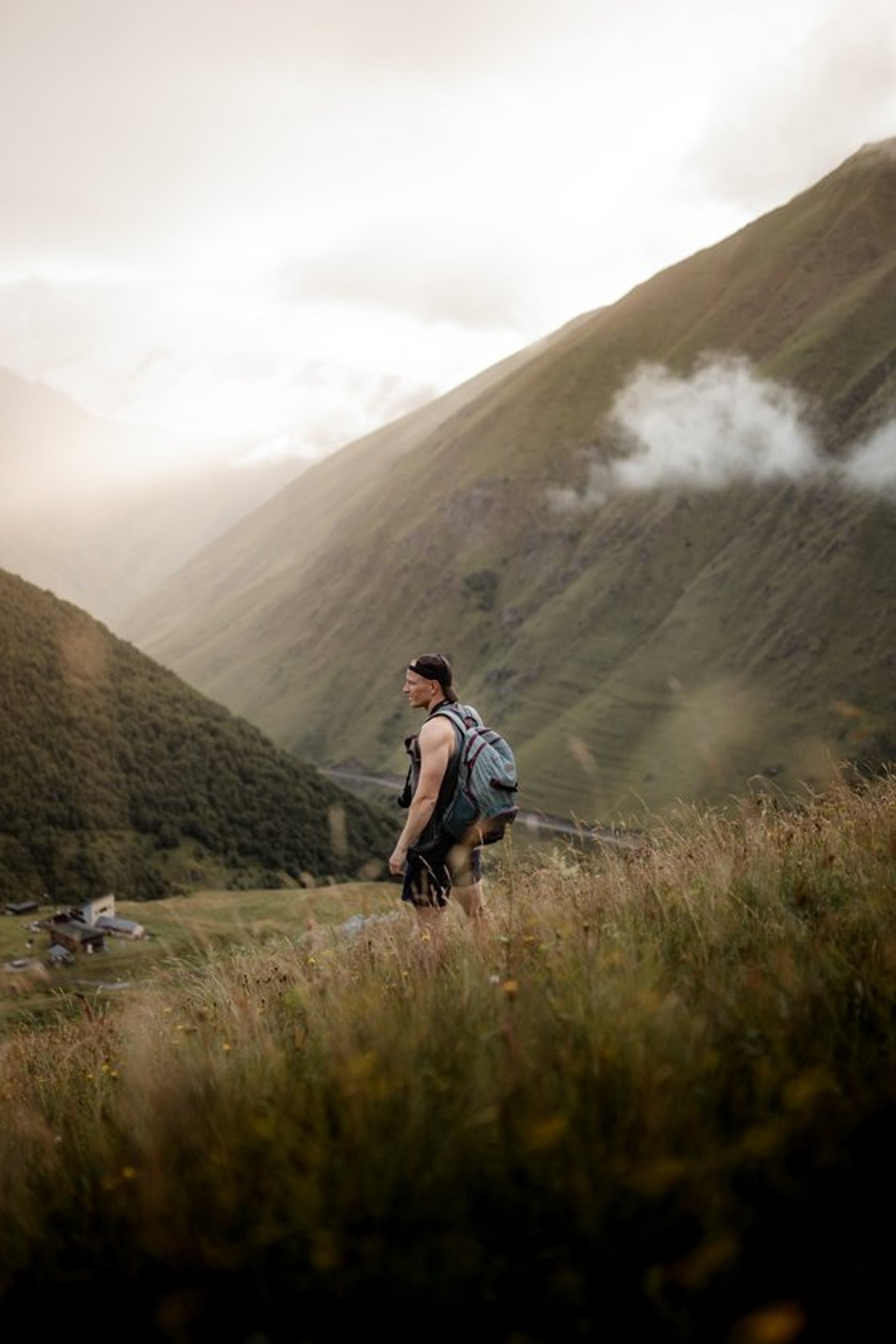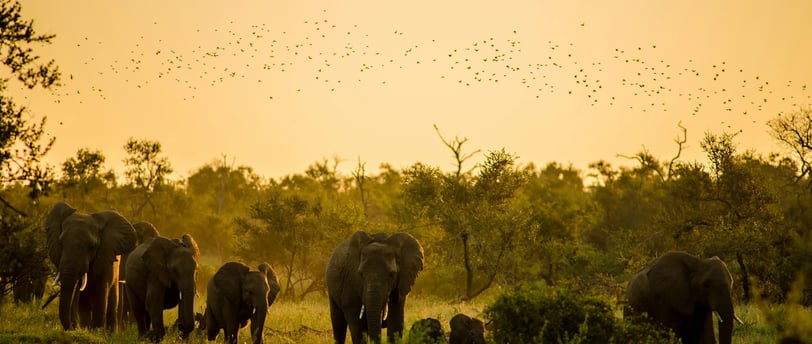
Exploring the Wonders of Kruger National Park: A Wildlife Enthusiast's Guide
11/8/20244 min read


Introduction to Kruger National Park
Kruger National Park, established in 1898, is recognized as one of South Africa's premier wildlife destinations, attracting nature enthusiasts and adventure seekers from all corners of the globe. Spanning approximately 19,485 square kilometers, the park is set in the northeastern part of the country, forming part of the Greater Limpopo Transfrontier Park, which extends into Mozambique and Zimbabwe. This vast expanse of land serves as a critical habitat for an impressive array of flora and fauna, ensuring its status as a sanctuary for wildlife.
The park's geography is characterized by diverse ecosystems, including savannahs, woodlands, rivers, and mountains, which contribute significantly to its rich biodiversity. Kruger is home to an astonishing variety of wildlife, often referred to as the 'Big Five'—lion, leopard, elephant, buffalo, and rhinoceros. Beyond these iconic species, the park boasts hundreds of bird species, numerous reptiles, and smaller mammals, making it an exceptional locale for wildlife observation and photography. The intricate balance of these ecosystems underscores the importance of conservation efforts to maintain the park's integrity and protect its diverse inhabitants.
Efforts to conserve the environment within Kruger National Park have garnered widespread recognition, highlighting the significant role that protected areas play in safeguarding biodiversity. The ongoing initiatives, such as anti-poaching campaigns and community awareness programs, are vital in ensuring that future generations will continue to experience the wonders of this remarkable wildlife haven. As a result, Kruger National Park not only serves as a premier location for safari experiences but also stands as a testament to the essential pursuit of environmental conservation and the celebration of South Africa's natural heritage.
Experiencing the Big Five in Kruger National Park
Kruger National Park is internationally recognized as a top destination for wildlife enthusiasts, particularly for those eager to encounter the famed 'Big Five.' This term, originally coined by big-game hunters to represent the five most difficult animals to hunt on foot, refers to the lion, elephant, rhinoceros, buffalo, and leopards, all of which are now celebrated attractions for wildlife tourism. Experiencing these magnificent creatures in their natural habitat is a pivotal aspect of any safari adventure in South Africa.
Lions, often referred to as the kings of the jungle, can frequently be spotted in areas such as the Satara and Lower Sabie regions. Observing their behavior during a pride’s evening hunt provides an exhilarating experience. Meanwhile, elephants, notable for their impressive size and social structure, are common near waterholes in the Letaba area. Visitors often find these gentle giants engaging in playful interactions or coming to drink, presenting excellent photographic opportunities.
The rhinoceros, although elusive due to their declining numbers from poaching, can sometimes be spotted in southern parts of the park, especially through guided tours that emphasize responsible wildlife viewing. Additionally, buffalo roam in large herds across Kruger, particularly in the central bushveld, providing a stunning sight as they graze in open areas. Lastly, while cheetahs prefer open savannahs and grasslands, they are often seen around the Skukuza and Satara regions, where their speed and agility can be observed during hunts.
For an optimal viewing experience, visitors are encouraged to embark on early morning or late afternoon drives, when wildlife is most active. Utilizing quiet vehicles can enhance the opportunity for close encounters with these extraordinary animals. Understanding the behaviors and habitats of the Big Five not only enriches one's encounter but also fosters a deeper appreciation for the delicate ecosystems of Kruger National Park. This immersive experience is a key highlight for anyone seeking to explore the remarkable biodiversity of this iconic sanctuary.
Planning Your Visit: Best Times and Tips
When contemplating a visit to Kruger National Park, understanding the optimal times for wildlife viewing and planning your itinerary are crucial. The dry winter months, particularly from May to September, present the best conditions for spotting wildlife. During this period, vegetation thins out, and animals congregate around water sources, making encounters more frequent. Conversely, from October to April, the park experiences the rainy season, resulting in lush landscapes and increased animal activity, but the thicker foliage can make wildlife harder to spot.
In terms of animal migration periods, August and September are notable months for witnessing the arrival of various species as they migrate in search of food and water, while the onset of rains in October marks the peak breeding season for many animals. Those planning a trip should also consider participating in specific park events or guided tours offered by experienced operators, which can enrich the experience by providing valuable insights and enhancing wildlife viewing potential.
When arranging your safari itinerary, it is advisable to include morning and evening game drives, as these times yield the most sightings. Guided Kruger National Park safari tours often come highly recommended as they not only increase chances of wildlife encounters but also ensure a safer experience. Park regulations, such as adhering to speed limits and maintaining a safe distance from animals, are strictly enforced and contribute to visitor safety and wildlife preservation.
Regarding accommodations, Kruger National Park offers various options ranging from luxury lodges to self-catering rest camps. Staying within the park enhances the overall experience by allowing frequent access to wildlife sightings at dawn and dusk while providing a comfortable refuge after a day of exploration. Planning your visit with these considerations in mind will ensure a rewarding experience in one of Africa's most celebrated wildlife destinations.
Booking Your Safari: Why Choose GetYourGuide
When planning a safari in Kruger National Park, selecting the right booking platform can significantly enhance your experience. GetYourGuide stands out as a leading option for travelers seeking an array of affordable and diverse tours and activities. This platform simplifies the booking process, making it user-friendly and accessible for both first-time visitors and seasoned safari enthusiasts. Its intuitive interface allows you to find and compare various safari packages, ensuring that you can secure an experience that aligns with your preferences and budget.
One of the notable advantages of using GetYourGuide is the extensive range of safari options available. Whether you are interested in guided game drives, immersive walking safaris, or specialized tours focusing on wildlife photography, the platform caters to a myriad of interests. Additionally, you can choose from different price points, from budget-friendly to premium experiences, making it easier to plan a memorable trip without overspending. This variety ensures that every traveler can find a safari that suits their unique needs and requirements.
Moreover, GetYourGuide prioritizes customer satisfaction, featuring numerous reviews that help inform your decisions. These reviews provide insights from other travelers, offering valuable experiences and perspectives on various safari tours. The platform also frequently offers attractive deals and promotions, allowing you to save money while exploring the wonders of Kruger National Park. Combining ease of navigation, a wealth of options, and user-friendly features, GetYourGuide emerges as a recommended choice for booking your safari adventure, ensuring a smooth transition from planning to experiencing the magnificent landscapes and wildlife of Kruger National Park.
